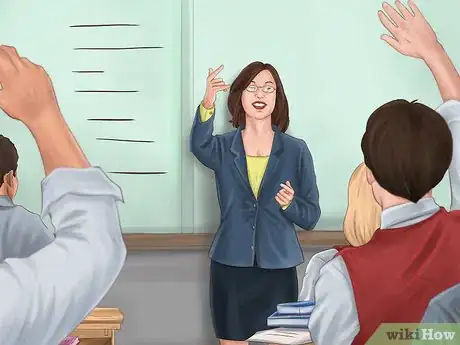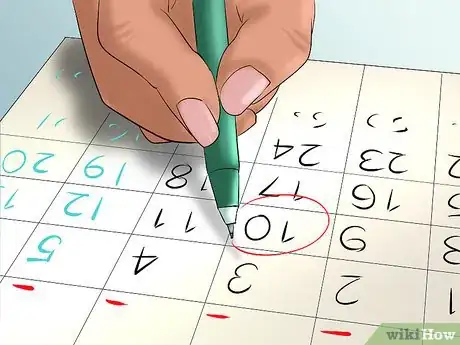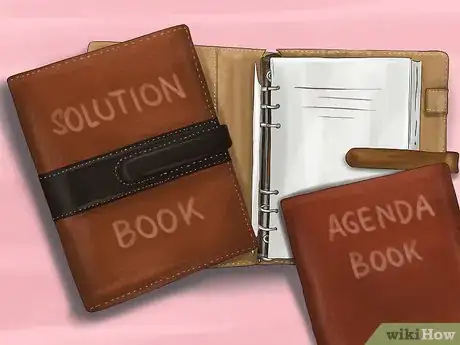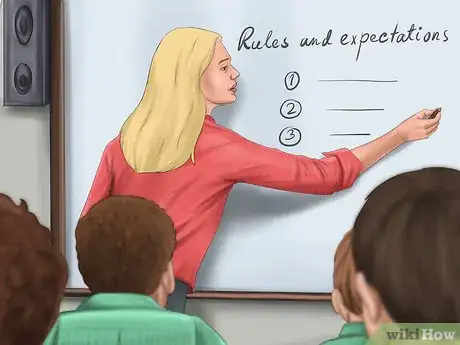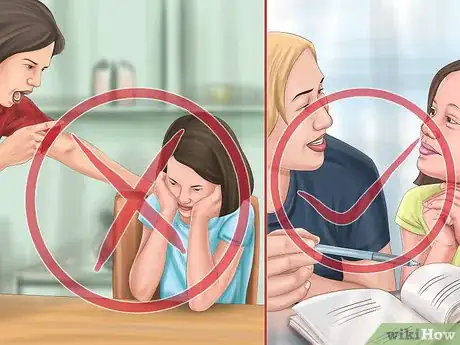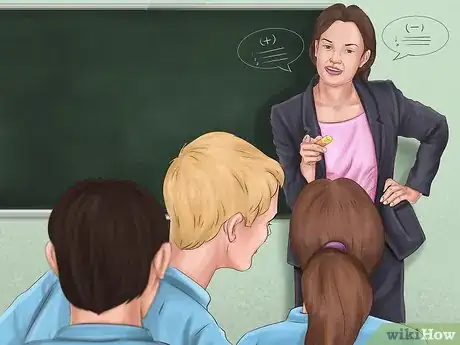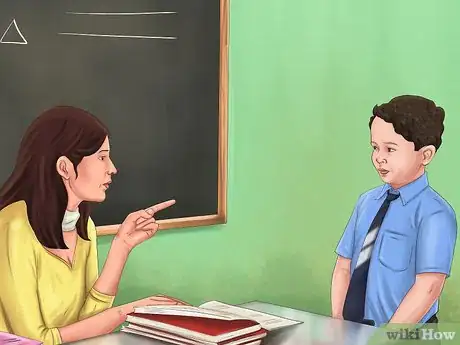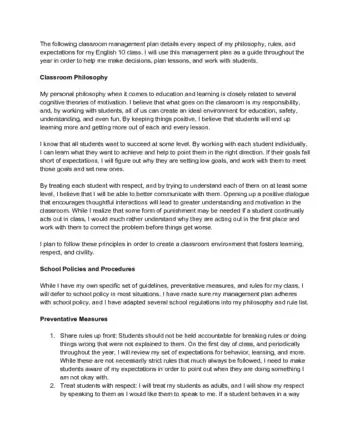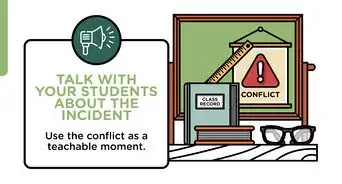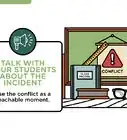This article was co-authored by Katie Styzek. Katie Styzek is a Professional School Counselor for Chicago Public Schools. Katie earned a BS in Elementary Education with a Concentration in Mathematics from the University of Illinois at Urbana-Champaign. She served as a middle school mathematics, science, and social studies teacher for three years prior to becoming a counselor. She holds a Master of Education (M.Ed.) in School Counseling from DePaul University and an MA in Educational Leadership from Northeastern Illinois University. Katie holds an Illinois School Counselor Endorsement License (Type 73 Service Personnel), an Illinois Principal License (formerly Type 75), and an Illinois Elementary Education Teaching License (Type 03, K – 9). She is also Nationally Board Certified in School Counseling from the National Board for Professional Teaching Standards.
wikiHow marks an article as reader-approved once it receives enough positive feedback. In this case, 100% of readers who voted found the article helpful, earning it our reader-approved status.
This article has been viewed 210,760 times.
Students need to feel comfortable and safe in order to learn effectively. As an educator, you need to manage your classroom in such a way that you create this sort of environment. A classroom management plan is a strategy you create and implement to help you get and maintain control of the classroom, as well as redirect and deal with negative behaviors. Whether you teach preschool, elementary, high school, or college, you will know how to respond when faced with disruptions to your learning environment.
Steps
Creating a Plan
-
1Determine your philosophy. Many classroom management plans begin with the teacher's philosophy of motivation. Basically, it lays out what you believe about education and how students should learn. You can talk about the environment you want to create and how you plan to create that environment, both physically and emotionally.[1]
-
2Start with school policies and procedures. Your school will have certain consequences and even certain rewards already in place. You can and should use this system as the basis of your own. Build off these and incorporate your own policies, procedures, and rules to create a positive classroom environment for your students.Advertisement
-
3Move on to positive reinforcement. Most management plans have some type of positive reinforcement. For instance, you can have kids earn stickers or stars towards a certain reward. These types of plans help motivate students to stay on task.[2]
-
4Understand each child's motivation. Not every child will be motivated by the same reward. If you choose to do so, you can have a system where each kid chooses her own reward.
- For instance, some kids may enjoy being rewarded by working in a group, while other kids might enjoy choosing their own activity for a period. Still others may prefer a prize of some sort. Finding what motivates each child can help encourage all personality types. You can also build plans based on age level, as what motivates a second grader will not likely motivate a high school student.
- One teacher identifies these six groups as the main motivators: praise, power (helping the teacher), projects (deciding what learning activity to do), people (playing outside, working in a group), prestige (recognition in front of the school), prizes, and praise (affirmation from the teacher).
-
5Figure out negative reinforcement. While positive reinforcement is the best way to deal with behavior in the classroom, you will also need consequences for negative actions, as well. These consequences should be progressive; that is, each one should be more severe than the last one.
- Stick with consequences that are easy for you to enforce; that is, you shouldn't need to stop everything to enforce it. It's often best to start with a warning, as all kids make mistakes.
- You can move on to other consequences, such as a time-out, a write-up, or a letter sent home. For instance, you could start with a warning, move on to a write-up, and then go to a letter home. Alternatively, so many write-ups could equal a letter home.
-
6Decide on a consequence time frame. For instance, maybe each kid starts fresh everyday with consequences. Alternatively, you could have consequences carry for a week.
- With rewards, you should generally let them carry over for the whole year, meaning that kids keep earning towards rewards all year. Once one reward is earned, you let the kid move on to earning the next one. You could have the rewards get progressively better or just let each small goal speak for itself.
-
7Decide on rules. Rules should be simple enough for kids to understand. They should be to the point with little-to-no gray area. You should also be able to enforce them easily.[3]
-
8Write the rules. Make the basic rules. If you word them carefully, you'll be able to cover a lot of ground with just a few rules. For instance, one rule could be to "Respect the classroom, your peers, and your teacher," as that covers being nice to other children, not talking back to the teacher, and not trashing the classroom.
Implementing the Plan
-
1Set the tone on the first day of class. Start building relationships with your students by being friendly and getting to know each other. Share the rules, rewards, and consequences so they know up front how you expect them to behave.[6]
- Establish a routine.[7] A routine lets students know what to expect each day in class. While moving away from the routine periodically can be effective for special days, doing it often causes students to be unprepared.
- There should be a routine for each part of the class and expectations for each routine, such as lining up for recess, partner work, and class dismissal.[8]
-
2Write a letter to send home about the plan. Get your students' parents on board by laying out your basic rules. You can also tell them about the rewards and consequences systems. That way, parents know what to expect throughout the year.
-
3Set the example. It is important that you follow the classroom rules, too. For instance, show you are respectful of each student's ideas. It will let them know they can trust you.
-
4Be consistent. Probably the most important part of any classroom management plan is being consistent with how you implement it. That means enforcing rules even when you don't want to, as kids will come to understand that you mean what you say in the classroom.[9]
-
5Use verbal and nonverbal reinforcements. That is, when you see a child doing well, show her you notice it by saying it aloud or smiling at her. When you see a kid starting to act up, shake your head at her, frown, or making a "tsking" noise if you're not ready to give her a warning.[10]
- Another way you can reinforce behavior is pointing to where you keep the rewards system, whether it is publicly displayed or not.
-
6Create a form letter for consequences. Write up a form letter if one of your consequences is a letter home. That way, you'll have it on hand when you need it. Keep it simple and to the point.
- This letter should not express anger. Rather, it should lay out what happened in the classroom in a straightforward way.
- You should have blanks for the child's name, what the child did, and the date. You can leave the blanks on the computer, or print out form letters that you fill in by hand, whichever you find easiest.
Sample Management Plan
Expert Q&A
Did you know you can get expert answers for this article?
Unlock expert answers by supporting wikiHow
-
QuestionHow can I make sure my students understand the rules of my classroom?
 Katie StyzekKatie Styzek is a Professional School Counselor for Chicago Public Schools. Katie earned a BS in Elementary Education with a Concentration in Mathematics from the University of Illinois at Urbana-Champaign. She served as a middle school mathematics, science, and social studies teacher for three years prior to becoming a counselor. She holds a Master of Education (M.Ed.) in School Counseling from DePaul University and an MA in Educational Leadership from Northeastern Illinois University. Katie holds an Illinois School Counselor Endorsement License (Type 73 Service Personnel), an Illinois Principal License (formerly Type 75), and an Illinois Elementary Education Teaching License (Type 03, K – 9). She is also Nationally Board Certified in School Counseling from the National Board for Professional Teaching Standards.
Katie StyzekKatie Styzek is a Professional School Counselor for Chicago Public Schools. Katie earned a BS in Elementary Education with a Concentration in Mathematics from the University of Illinois at Urbana-Champaign. She served as a middle school mathematics, science, and social studies teacher for three years prior to becoming a counselor. She holds a Master of Education (M.Ed.) in School Counseling from DePaul University and an MA in Educational Leadership from Northeastern Illinois University. Katie holds an Illinois School Counselor Endorsement License (Type 73 Service Personnel), an Illinois Principal License (formerly Type 75), and an Illinois Elementary Education Teaching License (Type 03, K – 9). She is also Nationally Board Certified in School Counseling from the National Board for Professional Teaching Standards.
Professional School Counselor Early in the year, spend extra time on classroom routines so students understand the expectations. For example, it may be okay to talk during partner work, but lining up for recess may need to be quiet. Explain the different expectations and practice them until your students are comfortable with them.
Early in the year, spend extra time on classroom routines so students understand the expectations. For example, it may be okay to talk during partner work, but lining up for recess may need to be quiet. Explain the different expectations and practice them until your students are comfortable with them.
References
- ↑ http://www.brighthubeducation.com/classroom-management/39644-building-an-effective-classroom-management-philosophy-and-plan/
- ↑ http://www.educationworld.com/a_curr/curr155.shtml
- ↑ Katie Styzek. Professional School Counselor. Expert Interview. 28 October 2020.
- ↑ http://www.teachsafeschools.org/Classroom-management.doc
- ↑ http://www.teachsafeschools.org/Classroom-management.doc
- ↑ Katie Styzek. Professional School Counselor. Expert Interview. 28 October 2020.
- ↑ Katie Styzek. Professional School Counselor. Expert Interview. 28 October 2020.
- ↑ Katie Styzek. Professional School Counselor. Expert Interview. 28 October 2020.
- ↑ http://www.educationworld.com/a_curr/curr155.shtml
- ↑ http://www.edutopia.org/blog/7-tips-better-classroom-management-tyler-hester
- ↑ Katie Styzek. Professional School Counselor. Expert Interview. 28 October 2020.
